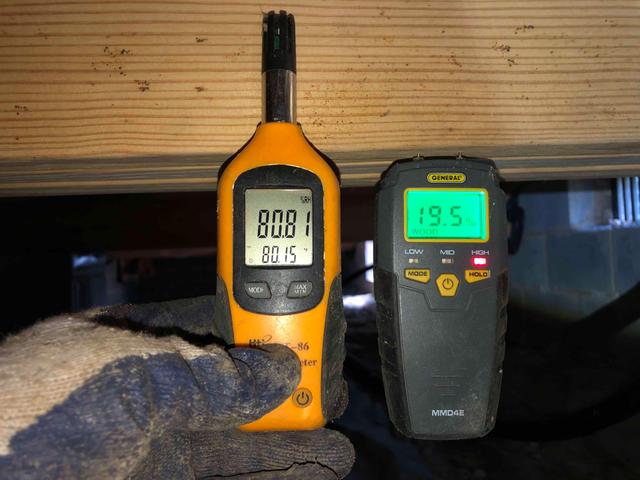
Humidity & Moisture Meter Readings
A Moisture Meter (L) is used to read the relative humidity in the crawl space. The top number, 80.81 is the % of relative humidity (RH), and the bottom number 80.15 is the temperature in the crawl space. At about 60% RH microbial growth can begin, so 80.8% is high. The Wood Moisture Meter (R) reads the moisture content in the wood, in this case, it's 19.9%. at about 19% wood moisture content, we can see wood rot begin, so 19.9% is certainly concerning and we want to address the humidity in the space before it gets worse and causes bigger issues. Thankfully, we didn't find any wood rot in this crawl space.
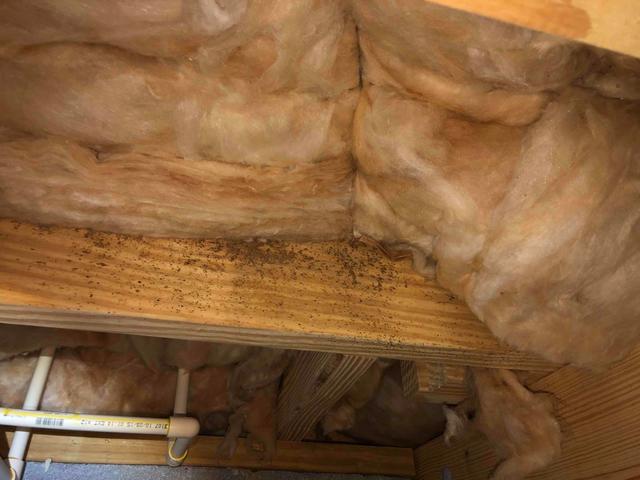
Mold & Mildew In The Crawl Space
The high relative humidity in the crawl space coupled with warm temperatures creates the ideal environment for mold and mildew to occur on the organic materials within the crawl space, such as the floor joists. These odors rise into the living space via the stack effect and impact indoor air quality.
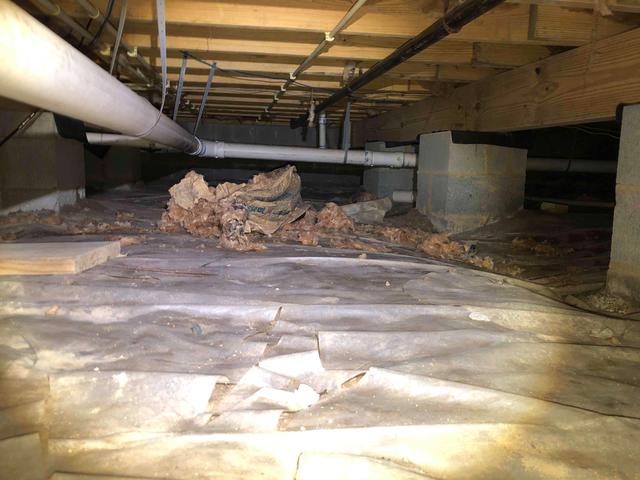
Fiberglass Insulation
Fiberglass insulation has fallen from the floor joists. It absorbs moisture like a sponge, becoming heavy and falling away from the floors. The moisture also causes the fibers to pull away from each other, which results in the smaller chunks of insulation scattered throughout the crawl space. Mold has grown on the paper backing of the insulation, which sits against the subfloor and the damp insulation holds moisture against the wood floor joists, helping them to absorb moisture.
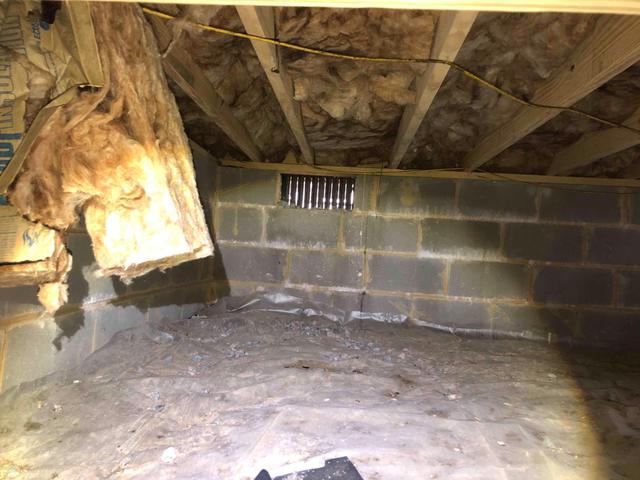
Crawl Space Vents & Foundation Walls
Open crawl space vents allow hot, humid air to flood in and become trapped during warmer months and cold air to rush in in the winter. The white marks on the wall are a sign of water seeping through the wall from the earth on the other side.
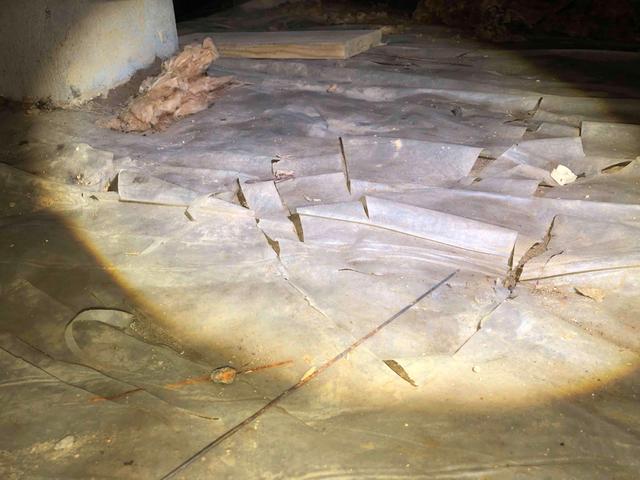
Moisture Barrier
6-mil vapor barriers are traditionally installed at construction and become easily tattered and torn as service persons move through the space to work on equipment and perform annual inspections. Critters, pests, and other small creatures find dark, damp crawl spaces to be a safe home creating nests, and causing damage to the liner and insulation as well.
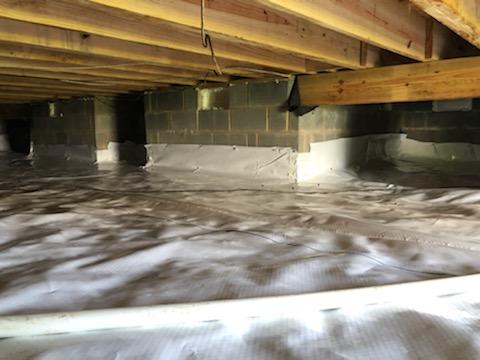
Sealed Vents
The Crawl Space vents, sill plate, and rim band are sealed. This prevents outside air infiltration keeping as much moisture out as possible.

Vapor Barrier
A 20-mil heavy-duty vapor barrier is installed. It's overlapped and sealed at all seams, wrapped and sealed around all piers, and attached and sealed to the foundation walls about 6 inches above outside grade. This seals the crawl space off from the earth's moisture. Because this liner is so much more durable than the 6-mil that was previously here, it can withstand service persons crawling and working on it without the worry of their boots or work bags tearing it.
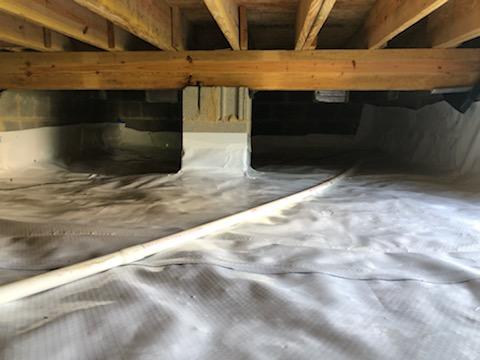
Mold Remediation
An antimicrobial has been used to treat the mold and mildew growth on the floor joists.
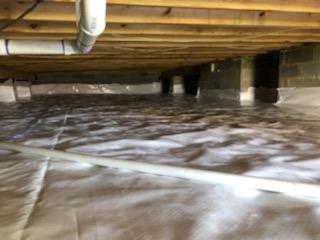
Insulating the Crawl Space
The crawl space is now ready for our spray foam technicians to apply an R-10 of closed-cell foam to the foundation walls. Then with everything sealed up and insulated, they will install the dehumidifier to control the relative humidity.

